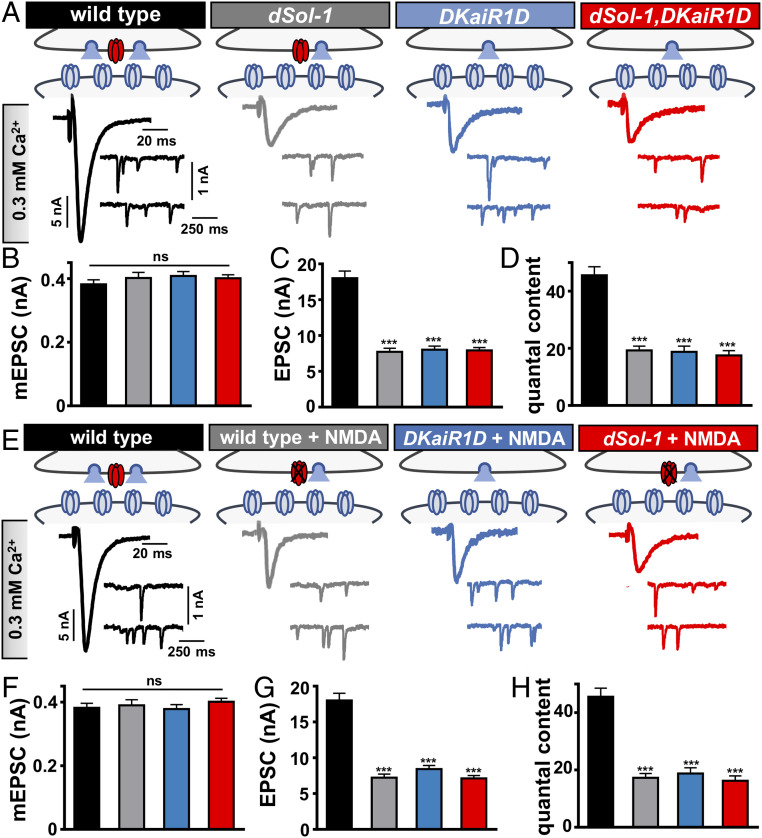Fig. 4.
dSol-1 and DKaiR1D act in the same genetic pathway to promote baseline neurotransmitter release. (A) Schematics and representative electrophysiological recordings at 0.3 mM extracellular Ca2+ in wild type, dSol-1 mutants (w;dSol-1bk1), DKaiR1D mutants (w;DKaiR1D2), and dSol-1,DKaiR1D double mutants (w;dSol-1bk1,DKaiR1D2). Note that the EPSC amplitude is not further reduced in dSol-1,DKaiR1D double mutants compared with either mutant alone. (B–D) Quantification of mEPSC amplitude (B), EPSC amplitude (C), and quantal content (D) values in the indicated genotypes. (E) Schematics and representative traces recorded in the presence of the DKaiR1D antagonist NMDA in 0.3 mM extracellular Ca2+ in the indicated genotypes. Application of NMDA to wild-type NMJs reduces baseline transmission but has no effect on DKaiR1D and dSol-1 mutants. (F–H) Quantification of mEPSC amplitude (F), EPSC amplitude (G), and quantal content (H) values in the indicated genotypes and conditions. Error bars indicate ±SEM. ***P < 0.001; ns, not significant. Absolute values for normalized data are summarized in SI Appendix, Table S2.

